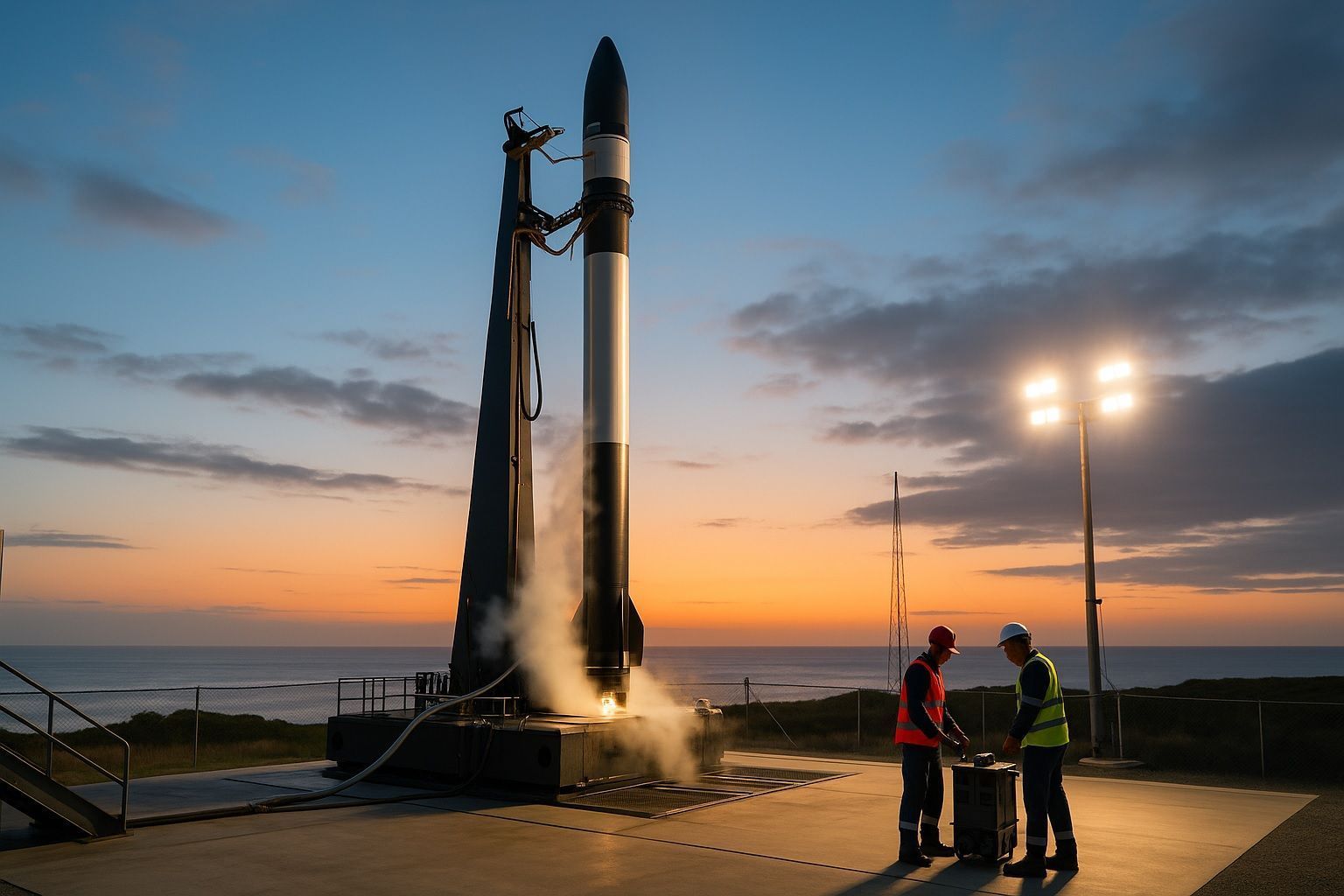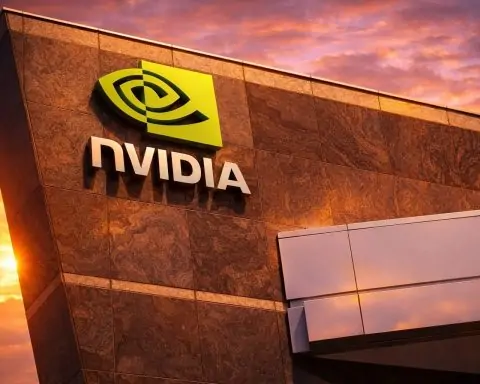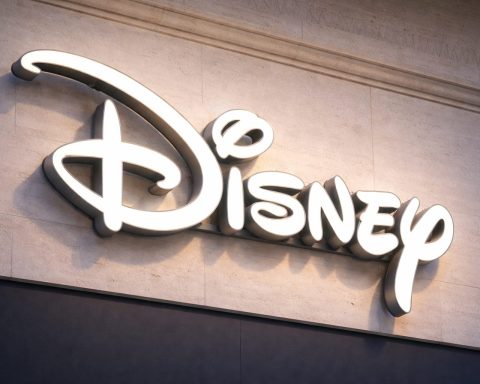Executive Summary
- Market Boom: The global small satellite (“smallsat”) launch services industry is entering a high-growth phase, driven by surging demand from commercial megaconstellations and government programs. Analysts project robust expansion through 2032, with launch revenues for small satellites potentially reaching tens of billions of dollars annually by the early 2030s [1] [2]. For example, one forecast anticipates the smallsat launch market could surpass $60 billion by 2030 [3], fueled by an estimated 11,600+ small satellites needing launch by that date [4]. This represents a high double-digit compound annual growth rate, outpacing many other space industry segments.
- Exponential Launch Volume Growth: The number of small satellites going to orbit has exploded in recent years. Over 2,300 smallsats were launched in 2022, up 32% from the previous year [5]. Smallsats now account for >95% of all satellites launched annually [6]. (Figure 1) below illustrates this rapid growth: annual smallsat launch counts jumped from only a few hundred per year in the mid-2010s to well over two thousand by 2021–2022, largely due to megaconstellations. This trend is expected to continue or accelerate through 2030, with SpaceX’s Starlink, Amazon’s Project Kuiper, OneWeb, and numerous Earth observation constellations driving high launch cadence. Maintaining these large constellations (with satellites lasting ~5 years) means recurrent launch demand far into the future [7].
- Falling Launch Costs & Price Trends: The cost to place payloads in orbit is on a downward trajectory, benefiting smallsat operators. SpaceX’s rideshare program offers industry-low prices (~$5k–$6k per kg) to Sun-synchronous orbit (e.g. $1 million for 200 kg) [8], an order of magnitude cheaper per-kilogram than dedicated small-rocket launches. New vehicles and reusability are further driving costs down: for instance, Rocket Lab’s upcoming Neutron medium launcher is expected to deliver payloads at ~$4,300 per kg, even cheaper than SpaceX’s current rideshare ~$6,000/kg, and roughly 1/6 the per-kg cost of Rocket Lab’s smaller Electron rocket [9]. By 2025 and beyond, price-per-kg for smallsat launches is forecasted to decline as reusable rockets, larger rideshare vehicles, and economies of scale take effect [10] [11]. However, dedicated launch services still carry a premium for flexibility (often $20k+ per kg) and some smaller launch providers are even raising prices amid strong demand and limited supply [12] [13].
- Key Players & Competition: The launch services landscape for small satellites is highly competitive and evolving. SpaceX dominates rideshare launches with its Falcon 9 Transporter missions (launching hundreds of smallsats per year at low cost) and is poised to further disrupt pricing with the forthcoming Starship super-heavy launcher. Rocket Lab has established itself as a leading dedicated small launch provider with the Electron rocket (~300 kg to LEO) and is expanding capabilities with the larger Neutron rocket by 2025. A wave of new entrants – from U.S. startups (Firefly Aerospace, Relativity Space, Astra, etc.) to international players (dozens of Chinese private launch firms, Europe’s Arianespace Vega and upcoming micro-launchers, India’s new SSLV rocket, and others) – are vying for market share. Many are targeting the smallsat segment with innovative technologies (e.g. 3D-printed rockets, air-launch systems, spin-launch concepts), creating an unprecedented diversity of launch options. At the same time, a shake-out is underway: not all ventures have survived. For instance, Virgin Orbit’s air-launch service collapsed into bankruptcy in 2023 after failing to achieve sustainable launch rates [14]. This underscores that while demand is high, the market is crowded, and only the most cost-efficient and reliable providers are likely to thrive long-term. Established space agencies and incumbents (NASA, ESA, ULA, Roscosmos, ISRO, etc.) also remain active – often focusing on larger payloads but sometimes catering to smallsats via rideshare arrangements. Overall, the competitive dynamics are driving innovation and price pressure, benefiting customers but creating winners and losers among providers.
- Segmented Opportunities: Within the smallsat launch boom, distinct segments are emerging:
- By Satellite Mass Class: Launch demand is highest at the extremes of the smallsat size range. Nanosatellites (below ~10–15 kg, often CubeSats) and Minisatellites (150–500 kg class) together are projected to account for ~65% of smallsat launch demand through 2030 [15]. Nanosats are typically launched in large batches (rideshares of dozens of CubeSats), while 100–500 kg minisats (e.g. for broadband or high-res imaging) often launch as primary payloads or in small constellations. Microsatellites (10–150 kg) represent the remaining ~35% of demand [16] – a significant share, though this middle category may gradually lose ground as many Earth observation and communications players upscale their satellite mass for greater capability [17]. (Notably, definitions are shifting: next-generation “smallsats” like SpaceX’s Starlink V2 or Amazon’s Kuiper satellites are 300–800+ kg each, prompting some analysts to expand the “small” class to include up to ~1200 kg [18].)
- By Launch Platform – Dedicated vs. Rideshare: Smallsat customers now choose between dedicated launches (an entire rocket for one customer or a small group) and rideshare launches (hitching a ride alongside other payloads on a larger vehicle). Historically, the vast majority of small sats reached orbit via rideshares on medium-to-heavy rockets. For example, in 2020 only ~14% of smallsats were launched on dedicated small launch vehicles, with ~86% as secondary payloads on larger rockets [19] [20]. Rideshare services – epitomized by SpaceX’s Transporter missions – offer ultra-low cost per kg (leveraging large rockets’ capacity) but come with constraints: customers must accept the provider’s schedule and orbit choices (rideshares typically go to popular orbits like SSO). Dedicated launchers, by contrast, provide bespoke orbit insertion and timing, which is valuable for certain missions (specific orbital planes, responsive timelines, etc.) [21]. The trade-off is cost: a small launcher flight might cost $7–15 M for a <500 kg payload [22] [23], versus a fraction of that for a rideshare slot. Going forward, both modes will coexist: rideshares handling bulk deployment of constellations and cubesats, and dedicated launchers serving missions that demand flexibility or responsive launch (including military tactical launches). Additionally, hybrid approaches are growing – e.g. “last-mile” orbital transfer vehicles (OTVs) that deploy on a rideshare then ferry smallsats to custom orbits [24] [25].
- By Orbit Destination:Low Earth Orbit (LEO) is overwhelmingly the target for small satellites. Well over 90% of smallsats operate in LEO (typically 300–1200 km altitude) [26], enabling missions like Earth observation, IoT connectivity, and broadband mega-constellations. Within LEO, sun-synchronous orbits (SSO ~500–600 km) are especially popular for imaging and are a common destination for rideshare launches. Medium Earth Orbit (MEO) sees relatively few smallsats – this region is mainly for large navigation satellites (GPS, etc.), though that could change if smallsat-based MEO constellations emerge. Geostationary Orbit (GEO) and beyond are niche segments for small satellites: a handful of ~100–200 kg tech demonstrators and commercial microsats have been sent to GEO as secondary payloads or via electric propulsion, and smallsat missions to lunar orbit and deep space are just beginning. Notably, NASA and others have launched cubesats to the Moon (e.g. CAPSTONE, Artemis I rideshare CubeSats) and plan smallsat probes for Mars and asteroid missions. While these beyond-LEO uses are limited today, they hint at a growing market for smallsat launch services to translunar injection or interplanetary trajectories in the late 2020s. Launch providers are starting to offer such options (e.g. special rideshare slots to lunar transfer or GEO). Overall, however, LEO dominates smallsat launch demand and will continue to do so through 2032.
- Technological Advancements: Technology is a key enabler of market growth, both on launch vehicles and satellites:
- Reusable Rockets & Larger Vehicles: The introduction of reusable boosters (pioneered by SpaceX’s Falcon 9) has slashed launch costs [27]. Reusability and economies of scale will advance further with next-generation rockets like SpaceX’s Starship and Blue Origin’s New Glenn, which promise massive capacity (50–100+ tons) and ultra-low $/kg costs. A single Starship could loft hundreds of smallsats in one go, at costs as low as <$500/kg if fully realized. This could further commoditize bulk LEO launch and intensify price pressure on smaller rockets. In response, small launch providers are innovating: Rocket Lab’s Neutron (reusable medium launcher), Relativity Space’s Terran R (reusable heavy launcher with 3D-printed components), and others are aiming to combine flexibility with lower costs to stay competitive [28] [29].
- Launch Vehicle Proliferation & Innovation: Dozens of new small launchers are in development globally, exploring diverse concepts – air-launch systems (e.g. Virgin Orbit’s now-defunct LauncherOne, China’s CASIC with aircraft-launched rockets), hybrid propulsion and green propellants, additive manufacturing to reduce part count, and even non-rocket launch concepts like electromagnetic catapults (SpinLaunch is testing a kinetic launch system for small payloads). While many of these projects are unproven, the wave of innovation reflects the intense interest in capturing the smallsat launch market. Some emerging vehicles will fail or face delays, but a few could offer breakthrough capabilities (for example, UK and European micro-launch startups aim to operate from spaceports in Scotland, Scandinavia, etc., enabling regional launch on demand).
- Smarter Small Satellites: On the satellite side, advancements indirectly affect launch services. Smallsat miniaturization and standardization (like the CubeSat form factor) have enabled mass production of spacecraft, which in turn drives launch demand. Improved smallsat propulsion and durability mean more smallsats can operate at higher orbits or perform orbit-raising – this allows, for instance, launching clusters of smallsats to a common orbit and then dispersing under their own power, a strategy used by some constellations to optimize launches. Additionally, growth in satellite deployers and kick-stage technology (such as Rocket Lab’s Curie kick stage, SpaceX’s Sherpa OTV, etc.) gives more orbit insertion options, making rideshares more flexible and attractive to smallsat operators.
- Launch Infrastructure: Around the world, spaceport infrastructure is expanding to support more launch cadence. New small-rocket launch sites have come online or are planned – from New Zealand and the UK’s SaxaVord, to Japan’s Taiki, India’s Sriharikota small pad, and multiple U.S. commercial spaceports. These facilities aim to reduce bottlenecks and offer dedicated launch slots for small vehicles, improving the responsiveness of launch services.
- Regulatory & Policy Factors: The regulatory environment is evolving alongside the market:
- Orbital Debris Mitigation: With the smallsat boom has come heightened concern over orbital debris and congestion. Regulators are enacting stricter rules for satellite deorbiting and collision avoidance. In late 2022, the U.S. FCC adopted a new 5-year rule (down from 25 years) requiring LEO satellites to be removed from orbit within 5 years of mission end [30] – a policy explicitly targeting the proliferation of small satellites. Such rules may slightly increase costs for satellite developers (who must include deorbit systems or fuel reserves) but also spur new services (e.g. debris removal tugs) and could influence launch demand by shortening replacement cycles. International bodies (UNCOPUOS, ITU) and other nations are similarly considering debris mitigation mandates that will affect constellation licensing.
- Spectrum and Licensing: Small satellite constellations must secure spectrum allocations (for communications) and launch licenses. Regulatory streamlining in some jurisdictions has helped: e.g., the U.S. and UK have introduced expedited licensing processes for smallsat launches, and agencies like the FAA are adapting to higher launch cadence with updated safety rules. Still, satellite frequency coordination remains a challenge, with thousands of new satellites vying for bandwidth – regulatory delays in spectrum approval could impact deployment timelines of constellations (and thus the launch schedule).
- Government Support and Procurement: Governments worldwide are investing in the smallsat launch sector, seeing it as strategically important. Space agencies and defense departments sponsor technology development and provide anchor launch contracts. For instance, the U.S. Department of Defense has funded “responsive launch” programs ( awarding contracts to Rocket Lab, Firefly, Virgin Orbit, etc. for on-demand smallsat launch services). In Europe, ESA’s Boost! program and national grants support homegrown micro-launch startups to ensure independent access to space for small payloads. Such initiatives are injecting capital and stability into the market, even as private venture funding becomes more selective.
- International Competition and Cooperation: The smallsat launch arena is also shaped by geopolitics. China’s rise is notable – backed by government and commercial investment, Chinese companies (CASC’s Long March rockets, startups like Galactic Energy, iSpace, Expace, etc.) performed a large number of small launch missions in recent years, making China one of the most active regions for new launch vehicles. However, U.S. export control laws (ITAR) largely prevent American or allied satellites from launching on Chinese rockets, effectively segmenting the market. Similarly, Russia’s launch offerings (once a staple for smallsat rideshare via Soyuz) have been largely cut off from Western customers as of 2022. This has shifted more demand to U.S. and allied providers. Meanwhile, international partnerships are forming – for example, Italian company D-Orbit and German provider Exolaunch broker rideshares across vehicles globally [31] [32], and agencies are collaborating on launch opportunities for small science missions. Regulatory alignment (or lack thereof) among nations on issues like debris, spectrum, and trade will continue to influence how the smallsat launch market develops regionally.
- Market Outlook (2025–2032): The outlook for smallsat launch services is highly optimistic, albeit with a few caveats:
- Growth Drivers: The primary driver is the unprecedented demand for satellite constellations. Hundreds of companies and government programs plan to launch constellations for broadband internet, IoT connectivity, Earth observation, and more. Even if only a fraction come to fruition, the numbers are staggering – tens of thousands of small satellites are expected to be launched over the next decade. This feeds a virtuous cycle: high demand attracts more launch providers and investment, which lowers costs and increases launch frequency, further boosting demand by enabling new use cases. Technological progress (reusability, manufacturing) is steadily reducing launch costs and increasing capacity, making space access cheaper and opening the door to startups and researchers. Public sector initiatives also bolster the market – from defense’s embrace of smallsats for resilient networks [33] to civil space using smallsats for science (e.g. weather, climate monitoring). Additionally, emerging markets and developing countries are increasingly launching their first satellites (often smallsats), adding new customers and regional growth [34] [35]. The 2025–2032 period will likely see sustained high growth, with some estimates forecasting a ~14–15% CAGR for the broader launch services market [36], and possibly higher for the smallsat-focused segment.
- Challenges: Despite the rosy demand picture, the industry faces significant challenges. Oversupply and Consolidation: The boom in launch vehicle development raises the prospect of more launch capacity than paying payloads, especially if many new rockets succeed. There is a risk of a shakeout where only a few launch providers win most of the market while others fail to find enough customers (Virgin Orbit’s 2023 failure is a cautionary tale [37]). Smaller launch startups need sustained launch cadence to survive, yet many smallsat customers can be fickle – opting for the cheapest ride (often on a big rideshare) rather than loyalty to a dedicated launcher. Economics and Investment: After a peak of investment in 2020–2021 (including SPAC IPOs of launch companies), investor sentiment has become more cautious. Early-stage launch ventures now face pressure to demonstrate unique value or technology to attract funding. Rising interest rates and tighter capital markets in the late 2020s could constrain the free flow of venture money that fueled the plethora of launch startups. However, strategic investment from larger aerospace companies or governments may pick up slack for promising players. Launch Infrastructure and Scheduling: As launch rates increase, range and airspace management could become a bottleneck. Launch sites will need upgrades to handle rapid turnarounds, and regulatory bodies must adapt to manage congestion (for example, coordinating multiple launches in one day, integrating air traffic control for rocket trajectories, etc.). Regulatory hurdles: While supportive in some ways, new regulations (debris mitigation, spectrum, environmental assessments for launches) could introduce compliance costs or delays. Environmental concerns about rocket emissions and fuel (especially for very frequent launch schedules) might grow, potentially spurring greener propulsion or operational limits. Reliability and Insurance: Many new launch vehicles will have unproven reliability, and high-profile launch failures can both disrupt schedules and increase insurance costs for satellite operators. Building confidence through demonstrated success will be critical for newer entrants.
- Investment & Strategic Trends: We anticipate a period of industry shakeout and strategic realignment toward the late 2020s. Some consolidation is likely – weaker startups may be acquired by competitors or pivot to niches (e.g. specialized orbital tugs rather than full rockets). Larger companies could form partnerships (for instance, traditional aerospace firms teaming with agile startups to combine reliability with innovation). There is also a trend of vertical integration by constellation operators: SpaceX launching its own Starlink satellites (and possibly others’ satellites via Starship in the future), Amazon investing in launch capacity for Kuiper (e.g. ordering dozens of launches from Arianespace, ULA, Blue Origin). This means a chunk of future launch demand is essentially “captive.” However, independent launch providers that establish a cost or service niche – e.g. Rocket Lab with a reputation for dedicated microsat launches and now moving upstream into satellite manufacturing – can attract plenty of third-party business. From an investor perspective, the winners will be those who either achieve significant scale and reuse (driving costs to lowest levels) or offer specialized services that big companies do not (for example, hyper-precise orbit insertion, responsive launch on short notice for tactical needs, or servicing or debris removal add-ons).
In summary, the 2025–2032 period will likely be remembered as the “gold rush” era for small satellite launch services, marked by fierce competition, rapidly advancing technology, and multiplying launch opportunities worldwide. For stakeholders – whether satellite operators planning constellations, investors evaluating launch companies, or government agencies seeking assured access to space – the key will be to monitor both the economic trends (pricing, supply vs. demand) and the technical/regulatory landscape (new capabilities, rules, and players). Smallsat launch services are poised for tremendous growth, but success in this market will require navigating its fast-evolving dynamics. Those launch providers that can deliver reliable, cost-effective, and flexible services are positioned to ride the wave of this expanding market into the 2030s.
Key Market Players and Providers (2025 Snapshot)
- SpaceX: Heavy launch rideshare leader. SpaceX’s Falcon 9 dominates smallsat launches by offering frequent rideshare missions (Transporter series) at rock-bottom prices (~$5k/kg) [38]. SpaceX has essentially created a “scheduled airline” to orbit, with launches every few months carrying dozens of customer smallsats. The company’s forthcoming Starship rocket (in development) could further revolutionize the market with unprecedented capacity (100+ tons to orbit) and ultra-low marginal cost – potentially enabling hundreds of smallsats per launch and driving cost per kg to only a few hundred dollars (if Starship becomes fully reusable as planned). By 2025, Falcon 9 rideshares remain the cheapest option for many, albeit with orbit constraints. SpaceX itself is also the biggest customer of launches (deploying its Starlink constellation), giving it economies of scale. Market impact: SpaceX’s aggressive pricing and high cadence have pressured other launch providers (it’s been called a “monopoly” in smallsat rideshare) [39], forcing them to specialize or cut costs. On the flip side, SpaceX provides a huge boon to smallsat operators by drastically lowering launch costs and increasing access.
- Rocket Lab: Dedicated small launcher pioneer. U.S./NZ-based Rocket Lab was among the first to offer a commercial small launch vehicle (Electron, ~300 kg to LEO). Since 2018, Rocket Lab has launched dozens of Electron missions, building a solid track record for smallsat delivery to custom orbits. The Electron rocket’s list price is about $7.5 M per launch [40] (recently trending upward due to high demand), which equates to roughly $25k–$37k per kg – pricier than rideshare, but with the benefit of dedicated scheduling and orbit selection. Rocket Lab also provides end-to-end mission services (satellite buses, mission control), positioning itself as a full-service provider. To remain competitive as small satellites grow in size, Rocket Lab is developing Neutron, an 8-ton class reusable rocket due ~2024–25, intended to serve constellation deployments more efficiently (13 ton to LEO, at an estimated ~$50 M per launch, or ~$4k/kg) [41]. Market impact: Rocket Lab has captured a significant portion of dedicated small launches globally and is seen as a stable, mature player among startups. Its success proves there is a viable market for dedicated launch despite SpaceX’s presence – especially for government missions and those needing precise orbital insertion. With Neutron, Rocket Lab is arguably moving into competition with medium launchers (challenging the likes of SpaceX Falcon 9 for constellation contracts) but will also be able to launch batches of smallsats more cost-effectively.
- Traditional Launch Providers (ULA, Arianespace, ISRO, etc.): Established launch organizations still play an important role in smallsat launch services, primarily via rideshare. Arianespace/ESA offers rideshare slots on the Vega rocket (300 kg class payloads dedicated, or multiple smallsats) and the upcoming Vega-C, as well as occasional opportunities on Ariane 6. United Launch Alliance (ULA) and Blue Origin (when New Glenn becomes operational) are focusing on large payloads, but they may carry smallsat secondaries or offer dedicated smallsat missions for NASA/DoD. India’s ISRO has been a long-time provider of rideshare launches via its PSLV rocket, which famously launched 104 satellites in one go in 2017. PSLV continues to be a reliable option, and ISRO’s new SSLV (Small Satellite Launch Vehicle), with ~500 kg to LEO capacity, is now operational to provide on-demand launch for microsatellites. Japan’s JAXA similarly had the Epsilon small launcher (around 500 kg to LEO), though its future is in flux after recent failures, and Japan is encouraging commercial small launch startups as well. Market impact: These players bring experience and often government backing, which appeals to certain customers (e.g., national agencies, universities). They sometimes cannot match the price of SpaceX or the agility of startups, but they contribute to capacity and diversity in the market. Notably, ISRO’s low-cost structure and geopolitical neutrality make PSLV/SSLV popular for international smallsat customers who seek alternatives to U.S. or Chinese launchers.
- Emerging Launch Startups: Beyond Rocket Lab, the 2020s have seen a proliferation of startup launch companies globally:
- United States: Firefly Aerospace (Alpha rocket ~630 kg to LEO, ~$15 M/launch [42], operational since 2021), Relativity Space (flew the demo of Terran 1 in 2023 and now developing Terran R), Astra (small Rocket 3 vehicle had several launches/failures; now pivoting to a slightly bigger Rocket 4), Virgin Orbit (air-launched 300 kg LauncherOne – flew 2020–22, but went bankrupt in 2023 [43]), ABL Space (1.2 ton RS1 rocket – first launch attempt 2023 failed, retry pending), Vector Launch, Stoke Space, and several others in earlier stages. Each is pursuing different niches (e.g. Astra aiming for very high launch rate with cheap rockets, Stoke developing a fully reusable second stage, etc.). The U.S. startups benefit from strong private investment and government contracts (NASA’s Venture Class Launch Services program, military launch experiments, etc.), but also face intense competition domestically.
- China: At least a dozen Chinese private launch firms have emerged since 2015 – Galactic Energy (Ceres-1 solid rocket, 5 successful launches by 2023; developing a larger Ceres-2), iSpace (Beijing Interstellar) (made orbit in 2019 with Hyperbola-1, but subsequent failures), LandSpace (launched Zhuque-2 in 2023 – the world’s first methane-fueled orbital rocket, partially successful), CAS Space, Expace (Kuaizhou rockets), OneSpace, Space Pioneer (Tianlong), and more. These companies are backed by a mix of commercial and state funding. China’s government also has the Long March series, but encourages the startups to capture the smallsat market. By 2023, Chinese launch startups collectively conducted a significant number of launches – making China one of the most active small-launch markets. However, most Chinese providers currently serve domestic or friendly nation payloads, due to geopolitical restrictions.
- Europe: A wave of European micro-launchers is in development, spurred by EU and national grants. Germany hosts startups like Isar Aerospace (Spectrum rocket ~700 kg to LEO, first launch expected 2024) and Rocket Factory Augsburg (RFA One) (~1300 kg to LEO, 2024 target), as well as HyImpulse (hybrid rocket) and ESA-backed microlaunch competitions. UK’s Orbex (Prime rocket) and Skyrora are developing vehicles to launch from Scotland. Spain’s PLD Space flew a suborbital test of its Miura-1 and is working on Miura-5 (300 kg to orbit). France, Italy, and others also have concepts. Europe’s motivation is to have sovereign launch access for smallsats (especially after Vega’s issues and reliance on others for rideshare). These startups are in early testing and face funding challenges, but at least a couple are likely to reach orbit by the late 2020s.
- Other regions: Russia had a small launcher (Soyuz-2-1v light variant, and Angara 1) but their commercial role is diminished. Japan may see a commercial successor to Epsilon. India could open SSLV to commercial operation widely. New launch projects are even coming from Australia, South Korea, South America (Brazil’s VLM small launcher) and the Middle East – often in collaboration with established players.
- Rideshare Aggregators & Service Companies: A unique position in the market is held by companies that arrange launches without their own rocket. Firms like Spaceflight Inc., Exolaunch [44], D-Orbit (which also builds orbital transfer vehicles), and Momentus act as brokers or integrators – they purchase space on rockets (often wholesale on a Falcon 9 rideshare or an ISRO mission) and then coordinate multiple customers’ smallsats on that launch, sometimes providing dispenser hardware or last-mile propulsion to get each satellite to its precise orbit. These service providers have launched hundreds of smallsats collectively [45]. Their value is in handling the complex logistics for smallsat operators and offering more orbit flexibility by using their own transfer stages. Market impact: Rideshare service companies help fill rockets to capacity and make launching almost a one-stop service for smallsat customers. They do face margin pressure (since SpaceX also allows direct online booking now), but they adapt by adding value through orbital delivery and custom solutions. As long as multiple launch options exist, aggregators provide a useful bridge between small payloads and launch providers.
Pricing Trends and Cost Breakdown
One of the most compelling aspects of the 2025–2032 forecast is the trend in pricing for launch services. Costs are generally trending downward per kilogram, though with variation by launch type. Table 1 provides a snapshot of typical launch pricing for smallsat-relevant vehicles and services as of the mid-2020s, illustrating the range of options:
| Launch Provider / Vehicle | Launch Type & Capacity | Price (USD) | Approx. Cost per kg |
|---|---|---|---|
| SpaceX Falcon 9 – Rideshare | Heavy launcher (22,800 kg to LEO) – shared launch of smallsats. | ~$62 M for full rocket; $1 M for 200 kg rideshare slot [46]. Additional mass $5k/kg [47]. | ~$2,700/kg (full capacity) or $5,000/kg (smallsat rideshare rate) [48]. |
| Rocket Lab Electron – Dedicated | Small launcher (≤300 kg to LEO). | $7.5 M target price per launch [49] (recently increasing). | ~$25k–$37k per kg (significantly higher cost for dedicated launch) [50] [51]. |
| Rocket Lab Neutron – Dedicated | Medium launcher in development (8,000 kg to LEO). | $50–55 M estimated per launch [52] (projected 2025 availability). | ~$4,300/kg (with reusability, at full capacity) [53] – cheaper than current Falcon 9 rideshare. |
| Firefly Alpha – Dedicated | Small launcher (630 kg to LEO). | $15 M per launch (fixed) [54]. | ~$24,000/kg [55]. |
| ISRO PSLV – Rideshare | Medium launcher (3,800 kg to LEO) – often launches dozens of smallsats. | $30 M per launch (estimated for full mission). $250k–500k for a ~10–20 kg cubesat via commercial arrangement. | ~$8,000/kg (for full capacity). Costs vary; historically competitive rates around $10k/kg or less for rideshare customers. |
| Virgin Orbit LauncherOne – Air-Launch (ceased) | Small air-launched rocket (~300 kg to LEO). | ~$12 M per launch (estimated) when operational. | ~$40,000/kg. (Company ceased operations in 2023 [56] due to financial issues.) |
| SpaceX Starship – Next-gen Heavy | Super-heavy fully reusable rocket (100+ ton to LEO). In development; not yet operational. | SpaceX targets <$10 M per launch (aspirational). Initial operational flights likely ~$20–30 M. | Potentially <$500/kg (if fully reusable and fully loaded). Starship could dramatically undercut all existing launch costs if successful. |
Table 1:Representative launch pricing for smallsat services (circa 2025). Prices are approximate; actual rates vary by contract and mission specifics. Rideshare options (e.g. SpaceX, PSLV) offer low per-kg pricing by leveraging larger rockets, whereas dedicated small launchers charge more per kg for bespoke orbit insertion. Note: Starship and other future vehicles could alter these benchmarks post-2025. [57] [58] [59]
Several insights can be drawn from the above comparisons:
- Rideshare Cost Efficiency: It is evident that rideshare missions on large rockets provide the lowest cost per kilogram. For example, at $5k/kg, SpaceX’s Falcon 9 rideshare undercuts even the manufacturing cost of many small launch vehicles. This cost advantage is a major reason rideshares have been so popular for deploying whole fleets of smallsats (e.g., SpaceX’s Transporter missions often carry 80+ satellites for a variety of customers). Other big rockets like China’s Long March or Russia’s (when available) similarly offered economies of scale. The downside is that smallsat operators might “wait in line” or compromise on orbit – but many are willing to do so given the budget savings.
- Dedicated Launch Premium: Small launch vehicles charge a premium for their dedicated service – often 4–6× higher $/kg than a rideshare [60]. This premium is worthwhile for certain customers (e.g., a company that needs to launch to an uncommon orbit or an urgent timeline, or one that wants to be sole mission integrator for simplicity). As more small launchers come online, there is some pressure to lower prices, but many cannot drop too low and still break even due to physics (a small rocket inherently has less mass ratio efficiency). Interestingly, Rocket Lab’s experience shows some pricing power: demand for Electron is high enough that the company signaled plans to raise prices in the future [61]. This suggests that for now, dedicated launch fills a critical need that some customers will pay for, even with cheaper rideshares available.
- New Vehicles Driving Prices Down: The entry of medium-class vehicles like Neutron, Relativity’s Terran R, Blue Origin’s New Glenn, ULA’s Vulcan, and of course SpaceX’s Starship, will drive a new round of cost per kg reduction. Neutron’s projected ~$4k/kg [62], if achieved, undercuts Falcon 9’s current rideshare rate and blurs the line between “small” and “medium” launch markets. If Starship achieves anywhere close to its goal pricing, it could rewrite the economics entirely – enabling, for instance, launching a 100 kg satellite for tens of thousands of dollars (making launch almost negligible in overall mission cost). While such extremes may not be realized until late in the decade (and depend on flight rate, reusability success, etc.), the direction is clear: more capability for the dollar.
- Secondary Costs and Services: It’s worth noting that the prices above are base launch costs. Many smallsat customers also incur additional fees for integration, deployment devices, insurance, etc. Companies like Spaceflight Inc. or Exolaunch charge for those services on top of the raw launch price. Moreover, if a smallsat needs an orbital transfer vehicle (to go from, say, an initial rideshare drop-off in LEO to a higher orbit like MEO/GEO or specific inclination), that can add hundreds of thousands of dollars or more. Thus, a savvy customer will consider total mission cost. In some cases, a seemingly expensive dedicated launch might save money if it avoids needing a transfer vehicle or if delay on a rideshare would miss a market opportunity. Launch pricing is becoming more transparent (e.g., SpaceX’s online booking rates are public), but the overall cost equation can still vary widely per mission requirements.
- Volume Discounts and Contracts: Big constellation operators often negotiate bulk launch contracts, which can significantly reduce per-launch prices. For example, Amazon’s Kuiper did a large buy of launches from multiple providers (Arianespace, ULA, Blue Origin) reportedly at favorable rates. Similarly, SpaceX as both provider and customer for Starlink essentially “pays itself” a very low marginal cost. These dynamics mean that headline prices might not always reflect what major players pay. However, smaller one-off customers generally pay list prices or close to them.
In summary, pricing trends from 2025 to 2032 indicate more affordable and flexible launch options for smallsat operators, albeit with a stratification: ultra-cheap rideshare for those who can take it, versus higher-cost bespoke launches for those who need special treatment. The competitive pressure is likely to keep prices in check – we may not see prices fall every single year (especially if demand is soaring; providers might maintain prices or even increase slightly, as Rocket Lab hinted [63]), but the value delivered per dollar will increase (more mass to orbit or more services for the same price). By 2032, if Starship and similar are operational, the notion of cost per kilogram may become far less of a barrier for typical LEO smallsat missions than it was a decade prior. Instead, availability of launch slots and orbital congestion might overtake cost as the primary concern!
Conclusion and Market Insights for Stakeholders
The small satellite launch services market from 2025 to 2032 is poised for extraordinary growth and transformation. Global launch rates will hit record levels, and revenues are expected to climb accordingly, perhaps quadrupling the 2023 market size by the early 2030s [64] [65]. This growth is fueled by the “New Space” revolution of miniaturized satellites, massive constellations, and lower-cost launch innovations. For stakeholders – whether satellite operators, investors, or policy-makers – several key insights and takeaways stand out:
- Smallsats are now the center of gravity in the space sector. The fact that 97% of all satellites launched in recent years are smallsats (under 600 kg) [66] underscores a fundamental industry shift. Launch service providers have adapted their business models to cater to this reality, offering more rideshares, building smaller rockets, and tailoring services to smallsat needs (quick integration, standardized interfaces like CubeSat deployers, etc.). Anyone planning a space mission today must evaluate how to leverage the smallsat launch ecosystem – it’s abundant and cost-effective, but also different from the old paradigm of bespoke single-satellite launches.
- Economics favor scale and reusability. The launch companies likely to dominate are those that either launch at high frequency and scale (like SpaceX) or utilize cutting-edge tech (like reusability or advanced manufacturing) to keep costs low. The launch price per kilogram is trending downward, and competitors must either meet those prices or justify a premium with unique value. For smallsat operators, this is good news: launch is no longer the bottleneck or cost driver it once was for space projects. By 2030, building and operating the satellite(s) may far exceed launch cost in many cases, flipping the historical cost stack.
- Flexibility and responsiveness are the new frontiers. With cost barriers falling, launch providers are increasingly competing on service and capability. The ability to offer on-demand launch (short lead time from booking to orbit), to insert satellites into precise orbits (even doing plane changes or custom inclinations via transfer vehicles), and to provide in-orbit services (tugging, docking, etc.) could become differentiators. For defense and certain commercial apps, responsiveness is crucial – e.g., launching a replacement satellite on weeks’ notice if one fails or is destroyed. We see the market moving toward that goal, with multiple small launchers and Northrop Grumman’s Pegasus (air launch) or Virgin Orbit (when it existed) highlighting rapid response potential. Stakeholders with urgent needs should cultivate relationships with providers who specialize in responsive launch.
- Watch for market saturation and choose partners wisely. The explosion of launch providers means not all will survive the next decade. Customers and investors should perform due diligence: look at a provider’s track record, financial stability, and technological edge. A failed provider can disrupt satellite deployment plans (as some Virgin Orbit customers experienced). Consolidation is likely; we might see mergers or the exit of weaker players around the 2025–2028 timeframe when many new rockets attempt first flights. Conversely, those that prove themselves in this window will likely be long-term winners. An investor might see opportunity in backing a firm that emerges from the pack with a unique niche (for instance, servicing regional markets or offering rides to specialty orbits like cislunar space).
- Policy will play a bigger role as space gets crowded. The launches of 2030 will occur in a much busier sky than those in 2020. The risks of collision and radio-frequency interference increase with each thousands of satellites added. Thus, expect more active involvement from regulators: stricter debris rules (like the 5-year deorbit mandate [67]), requirements for collision-avoidance capabilities on satellites, perhaps even launch licensing tied to congestion metrics (to manage how many satellites can be injected into certain orbits). International coordination will be needed to ensure sustainability of the orbital environment. For the launch industry, regulations could impose new practices (for example, requiring upper stages to deorbit promptly to avoid space junk, which might slightly raise costs or complexity for launch firms). Stakeholders should stay engaged in policy discussions and support efforts that balance growth with safety and sustainability – it’s in everyone’s interest that space remains accessible in the long run.
- New markets and services on the horizon: Looking beyond 2030, today’s smallsat launch services may evolve into broader space logistics services. We already see early signs: some launch companies are moving upstream into building satellites (Rocket Lab, for one) or downstream into operating constellations. There’s a logical synergy in offering customers an end-to-end package (build, launch, perhaps even operate). Additionally, services like satellite refueling, on-orbit assembly using small payloads, and point-to-point suborbital travel (high-speed earth transport via rockets) are potential adjacencies. While these are nascent in 2025, the intensive R&D in launch technology could make them feasible by the 2030s. An investor in launch might find future revenue streams in these areas, beyond just putting objects into orbit.
In conclusion, the small satellite launch sector is entering a golden age of growth, innovation, and expanding possibilities. Access to space is more democratized than ever – startups, universities, and even individuals can put payloads in orbit via standardized smallsat launch services. From 2025 to 2032 we will see this democratization accelerate, enabling applications we can only barely foresee (ubiquitous global connectivity, real-time Earth monitoring, new space-based infrastructures). The ride will be dynamic: prices will drop, players will come and go, and technology will leap ahead. Stakeholders who stay informed and agile, seizing the opportunities of lower cost and higher launch frequency, will be best positioned to benefit from the smallsat launch revolution that’s underway.
Sources:
- Frost & Sullivan, “Small-satellite Launch Services Market, Q1 2018 Update, Forecast to 2030” – via Via Satellite [68] [69] (market size and demand projections; segmentation by mass class and operator concentration).
- Allied Market Research, “Space Launch Services Market Research, 2033” [70] [71] (overall launch market CAGR and fragmentation; mention of smallsat launch development).
- Credence Research, “Satellite Launch Vehicle Market Size, Share and Forecast 2032” [72] [73] (global market value forecast 2024–2032; drivers like smallsat constellations and reusability).
- Via Satellite (Vivek S. Prasad), “SmallSat Launch Market to Soar Past $62 Billion by 2030” [74] [75] (context on smallsat demand growth, constellation drivers, current launch capacity meeting ~52% of demand).
- Military Embedded Systems (Lisa Daigle), “Small-satellites launch market may surpass $62 billion by 2030” [76] [77] (Frost & Sullivan data: 11,631 launch demands by 2030; 0–15 kg and 150–500 kg sats = 65% of demand; ~32 operators to generate 90%+ of demand).
- Impulso Space (G. Guerrieri), “Dedicated, Rideshare and Piggyback” [78] [79] (statistics on 2022: 2,304 smallsats launched = 95.5% of all satellites; growth rates 2019–2022; explanation of dedicated vs rideshare trade-offs).
- SpaceNews (Jeff Foust), “Rideshare industry adapting to a changing smallsat market” [80] [81] (trends in rideshare services, Exolaunch and D-Orbit perspectives; constellation demand vs. new regions’ demand; evolving customer needs and satellite sizes).
- BryceTech, “Smallsats by the Numbers 2024” [82] [83] (launch trends: increase in small launch vehicle missions 2023; data on small vs heavy launcher usage for smallsats).
- BryceTech, “Smallsats by the Numbers 2021” [84] [85] (FAA mass class definitions; stat that in 2020 only 14% of smallsats launched on micro/small vehicles, illustrating heavy use of rideshare).
- TechCrunch (D. Etherington), “SpaceX will now let you book a rocket launch online…” [86] (SpaceX rideshare pricing: $1M up to 200 kg, +$5k per kg over that; web booking tool details).
- Tesmanian (E. Arevalo), “100 spacecraft signed up for Falcon 9 rideshare” [87] (SpaceX’s website quote: “$1M for 200 kg to SSO, additional mass $5k/kg”).
- Ill-Defined Space (Blog), “Revisiting Rocket Lab and Neutron” [88] [89] (cost metrics: Electron ~$7.5M or ~$25k/kg; Neutron projected ~$50M, ~$4.2k/kg, undercutting SpaceX’s ~$6k/kg rideshare; comparative per-kg costs).
- SpaceNews (Jeff Foust), “Rocket Lab to resume Electron launches…” [90] [91] (Rocket Lab investor call: Electron price ~$7.5M; demand allowing potential price increases; fully booked manifest for 2024).
- NewSpace Index / Factories in Space – Launcher database [92] (Firefly Alpha price $15M, 630 kg payload, ~$23.8k/kg; various global small launcher stats).
- Reuters (Joey Roulette), “Branson’s Virgin Orbit files for bankruptcy…” [93] (Virgin Orbit Chapter 11 filing in Apr 2023 after failed launch; illustrates business challenges).
- NASA Small Spacecraft Tech report 2022/23 [94] (FCC new 5-year deorbit rule for LEO satellites adopted Sept 2022, highlighting regulatory change for debris mitigation).
- Satellite Markets & Research, Executive Roundtable on Small/Medium Launch [95] [96] (BryceTech insights: communications mega-constellations dominating activity; governments adopting smallsats for defense; dozens of new launch vehicles <500 kg in development).
- Reuters (Mike Wall / CNBC repub.), “Virgin Orbit shuts down after bankruptcy sales” [97] (confirmation of Virgin Orbit’s shutdown mid-2023, assets sold – market consolidation example).
References
1. militaryembedded.com, 2. www.credenceresearch.com, 3. militaryembedded.com, 4. militaryembedded.com, 5. impulso.space, 6. impulso.space, 7. militaryembedded.com, 8. techcrunch.com, 9. www.illdefined.space, 10. www.credenceresearch.com, 11. www.credenceresearch.com, 12. spacenews.com, 13. spacenews.com, 14. www.reuters.com, 15. militaryembedded.com, 16. militaryembedded.com, 17. www.satellitemarkets.com, 18. www.satellitemarkets.com, 19. brycetech.com, 20. brycetech.com, 21. impulso.space, 22. spacenews.com, 23. www.newspace.im, 24. spacenews.com, 25. spacenews.com, 26. impulso.space, 27. www.credenceresearch.com, 28. www.illdefined.space, 29. www.illdefined.space, 30. www.nasa.gov, 31. spacenews.com, 32. spacenews.com, 33. www.satellitemarkets.com, 34. spacenews.com, 35. spacenews.com, 36. www.credenceresearch.com, 37. www.reuters.com, 38. techcrunch.com, 39. interactive.satellitetoday.com, 40. spacenews.com, 41. www.illdefined.space, 42. www.newspace.im, 43. www.reuters.com, 44. spacenews.com, 45. spacenews.com, 46. www.tesmanian.com, 47. www.tesmanian.com, 48. www.tesmanian.com, 49. spacenews.com, 50. www.illdefined.space, 51. spacenews.com, 52. www.illdefined.space, 53. www.illdefined.space, 54. www.newspace.im, 55. www.newspace.im, 56. www.reuters.com, 57. techcrunch.com, 58. spacenews.com, 59. www.newspace.im, 60. www.illdefined.space, 61. spacenews.com, 62. www.illdefined.space, 63. spacenews.com, 64. militaryembedded.com, 65. www.credenceresearch.com, 66. impulso.space, 67. www.nasa.gov, 68. interactive.satellitetoday.com, 69. militaryembedded.com, 70. www.alliedmarketresearch.com, 71. www.alliedmarketresearch.com, 72. www.credenceresearch.com, 73. www.credenceresearch.com, 74. interactive.satellitetoday.com, 75. interactive.satellitetoday.com, 76. militaryembedded.com, 77. militaryembedded.com, 78. impulso.space, 79. impulso.space, 80. spacenews.com, 81. spacenews.com, 82. brycetech.com, 83. brycetech.com, 84. brycetech.com, 85. brycetech.com, 86. techcrunch.com, 87. www.tesmanian.com, 88. www.illdefined.space, 89. www.illdefined.space, 90. spacenews.com, 91. spacenews.com, 92. www.newspace.im, 93. www.reuters.com, 94. www.nasa.gov, 95. www.satellitemarkets.com, 96. www.satellitemarkets.com, 97. www.reuters.com










